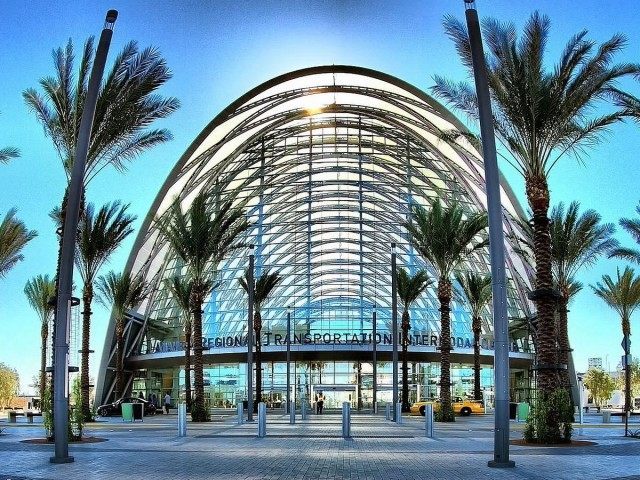Anaheim’s shiny new transit center, ARTIC, has become an illustration of the problems with California’s bloated $68 billion high-speed rail plan.
Anaheim officials had promised daily ridership of up to 10,000 out of ARTIC (Anaheim Regional Intermodal Transit Center). Yet in its first full year of operation, the station hit a mere 2,000 users a day between bus and train riders, the Orange County Register reports.
Funding for the $184.2 million station came largely from Orange County taxpayers through half-percent sales tax Measures M and M2, but also included federal funds. $11.4 million of the station’s funding came from federal funds according to Great American Stations.
Taxifornia 2016 highlights the troubled aspects of California’s high-speed rail, with a portion of the book detailing the troubled ARTIC rail station.
Businesses inside the transit center have failed to open as advertised. The largely empty space leaves little inspiration to remain inside.
The Register mentions that the high-speed rail is meant to connect to Anaheim by 2029. Other estimates have been far less optimistic. Last October, former chairman of the Orange County Transportation Authority (OCTA) Board of Directors Jeffrey Lalloway expressed his belief that the high-speed rail will never reach the Anaheim center.
OCTA Board Vice Chairman Michael Hennessey called ARTIC beautiful, but not a source of improved transportation, according to the Voice of Orange County. USC Industrial and Systems Engineering program professor James E. Moore II told the Register that given the legal cases lodged against the California High Speed Rail Authority (CHSRA), he doesn’t believe the track to Anaheim will ever be built.
Former Anaheim Mayor Curt Pringle once served as chairman of the CHSRA and has been described by the L.A. Times as ARTIC’s biggest advocate. Pringles was eventually called out for holding positions as mayor and on both the OCTA Board of Trustees and the CHSRA according to the Register.
CHSRA has projected approximately 18,000 high-speed rail passengers a day, according to the Orange County Register. However with ARTIC ridership estimates far off course, the high-speed rail estimates in great doubt as well.
As for the promise that the high speed train will transport passengers from San Francisco to Los Angeles in under three hours, significant skepticism exists that it will actually operate in under three hours. Legally, it may only be required to have the capability to do so, not actually to do so.
On Saturday, the Register reported on the astronomical payback period on California’s estimated $68 billion cost (previous estimates for the project have been higher):
It would take more than 790 million people paying $86 a ticket for the estimated $68 billion high-speed rail system to break even. That is the equivalent of 20.3 times the population of California in 2015.
In contrast, the Register notes, the estimated cost to travel from Anaheim to San Francisco by car is $34, by bus is $53, and by air is $206–with rates down in the $70 range on some tickets.
Even if the bullet train does reach Anaheim, the ARTIC station would still need a new terminal and platforms to the south of the now-empty station according to this weekend’s Register. And it’s California taxpayers who will help foot the bill for that expansion, which city engineer Rudy Emami says will likely exceed a previous estimated cost of $91 million.
Actual rail construction has not even started for the first, small, 29-mile portion from Madera to Fresno.
Follow Michelle Moons on Twitter @MichelleDiana

COMMENTS
Please let us know if you're having issues with commenting.